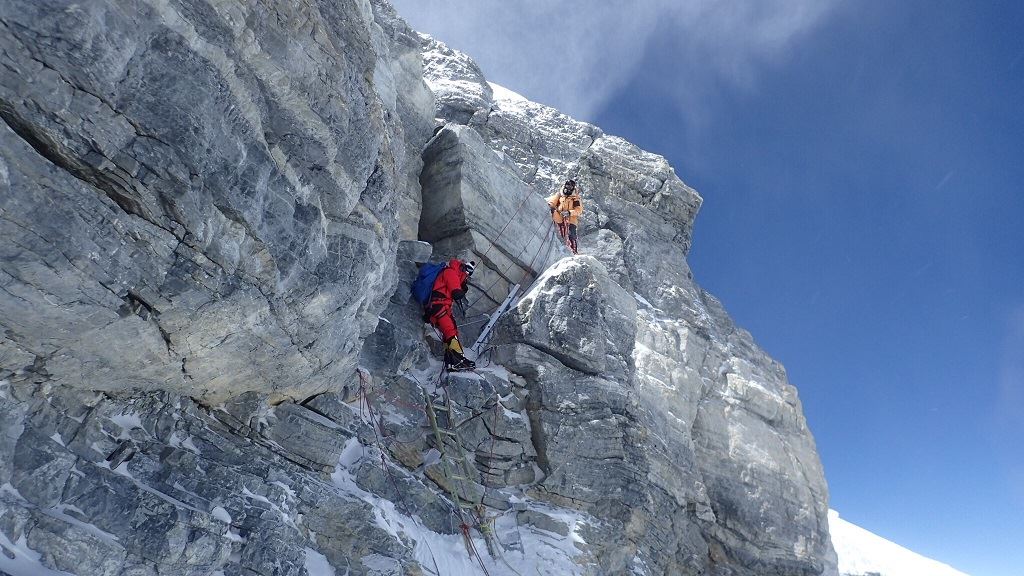![Climbing Mount Everest [Image: Bjorn Adventure]](https://fabbaloo.com/wp-content/uploads/2020/05/everest1a_img_5eb09219433ae.jpg)
When working with high-strength 3D printed parts, it’s only natural to want to test them.
Often, stress testing is done in the lab. Techs will apply known forces to a part to determine the exact points of stress and breakdown, recording the results quite carefully in a notebook.
But the intent is for those parts to be used outside of controlled lab environments. Sometimes way outside.
Scaling Up (With) 3D Prints
Sweden-based SolidEngineer is a Markforged partner, and so has several of their high-strength 3D printers in-house.
The company’s CEO, Björn Lindwall, turned to those systems to create parts for his adventures last year.
When I “go on adventures”, I sometimes mean I’m going to the grocery store, or sometimes mean heading to a new country for a conference. Those queues and clean convention halls lack a little “adventure” luster, though, when put up against what Lindwall considers adventures. As he tracks at his Bjorn Adventure project, Lindwall has had a lifetime of adventure to build up to his more recent exploits.
“During these years,” he explains of a youth spent partly in Tanzania, “living with adventure as a lifestyle was a part of life, regardless of the current war in Uganda, overloaded propeller aircrafts in the jungle, river crocodiles looking for breakfast, lions who liked us, malaria, sharks at the [reefs] etc.”
Following a few years of “settling down” — steady job, marrying, having kids — Lindwall turned back to adventuring.
He has also brought 3D printing into his adventuring, as his day job enabled him access to those Markforged 3D printers and materials. He explained of one piece of equipment:
“SolidEngineer’s development team with Fredrik Stare at the forefront has helped to develop a completely new design for a protection for the ‘Black Diamond Raven Ice Ax With Grip’ ice ax. The problem is that a sharp end of the ice ax can easily break through during transport. At the same time, we try to combine several different functions in the protection. Now Fredrik has printed a prototype in MarkTwo of the detail and he managed to get an incredibly good suction fit around the rubber handle. We had to choose between carbon fiber, fiberglass, kevlar or nylon. However, the choice finally fell on kevlar to achieve some flexibility in the stroke.”
![The ice ix with 3D printed end [Image: Bjorn Adventure]](https://fabbaloo.com/wp-content/uploads/2020/05/Black-diamonda_img_5eb0921990b2c.jpg)
The choice to bring 3D printing in was relatively straightforward, and has been serving him well.
Onyx To Everest
For another go at the world’s tallest peak, Lindwall planned carefully; the success of this expedition would gain him the title of Sweden’s oldest mountaineer to summit Everest.
When it came time to plan a spring 2018 expedition to summit Everest, he said, “The technology has focus on weight saving this time and bringing only what I need.”
Enter Onyx.
Lindwall and his team examined the extensive equipment needs for the ambitious climb and focused in on a few pieces where 3D printing could lighten the load. Among these were a housing for satellite communication equipment and lighter-weight crampons.
![The satellite communication equipment box was 3D printed using Markforged's Onyx material [Image: Markforged]](https://fabbaloo.com/wp-content/uploads/2020/05/satellitebox_img_5eb09219d46d1.jpg)
Unsurprisingly, mountaineering equipment takes a good amount of wear and tear: he had to plan for everything to survive temperatures of -40C, high altitudes, and generally being banged about during the ascent.
Both the satellite box and the formerly-steel parts of the crampons were then 3D printed in carbon filled-nylon Onyx material.
“Yes, steel will last longer, but the steel equipment on the crampons weigh 50 grams, and the Onyx parts weigh 15 grams,” he noted.
The crampons survived pre-Everest testing on a South American peak, and headed next to the expedition to Mount Everest. After eight weeks of expedition — successfully achieving his title at the summit at age 56 — Lindwall returned to base camp to find all the 3D printed parts had survived, worn but functional.
Peak Testing
![Lindwall at the summit of Mount Everest [Image: Bjorn Adventure]](https://fabbaloo.com/wp-content/uploads/2020/05/everest2a_img_5eb0921a33175.jpg)
Now, Lindwall and his SolidEngineer team are able to use the success story as a marketing ploy.
Most equipment partners don’t go to quite these lengths to prove out the technologies they provide — but really, there’s no arguing the peak of use-case success from Earth’s tallest peak. This may not be everyone’s new marketing strategy, but does add a nice flair of “I’d literally trust it with my life.”
Via Markforged and Bjorn Adventure











Coronavirus is on the rise, and so are efforts to deploy 3D printing to combat infection.